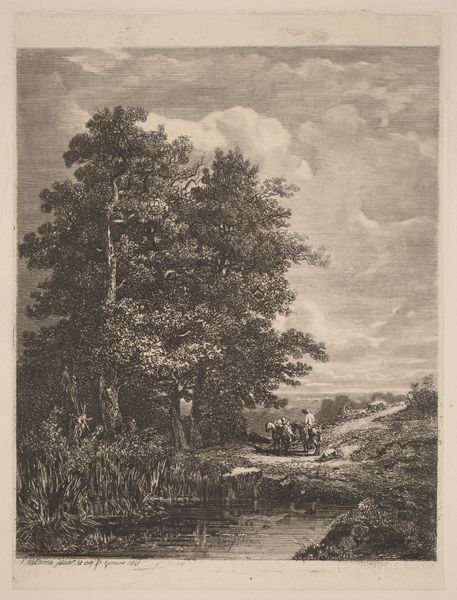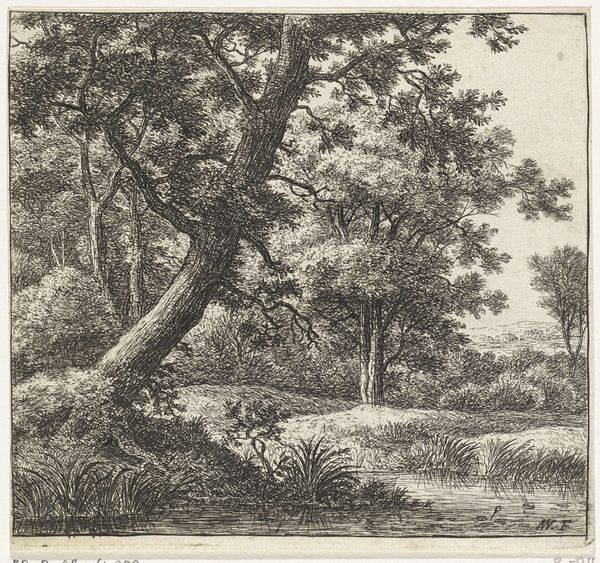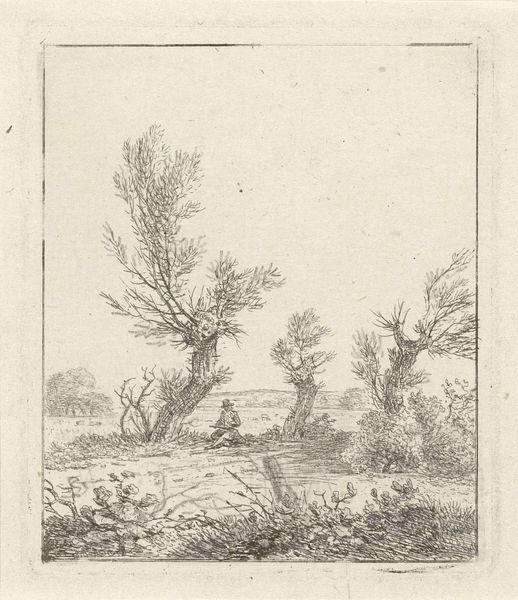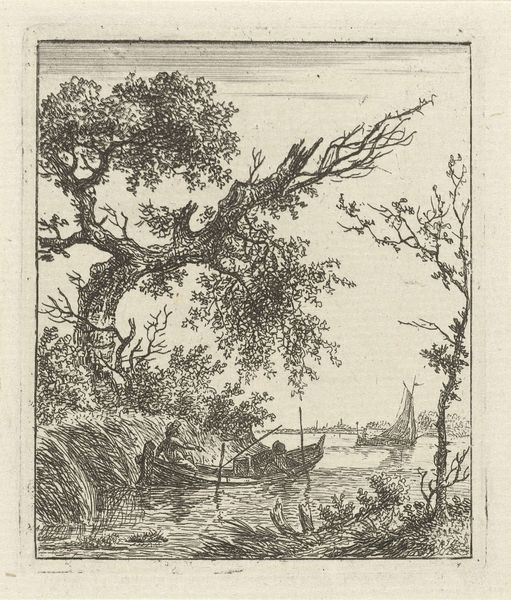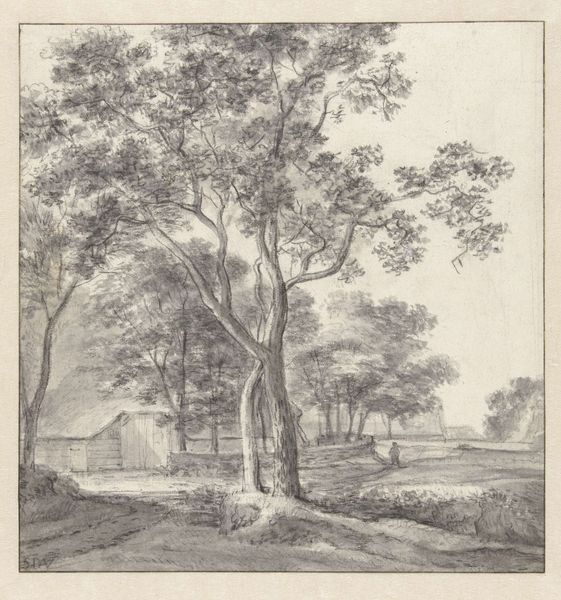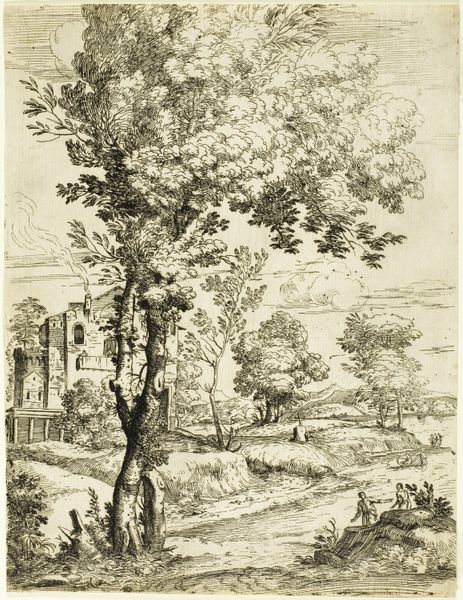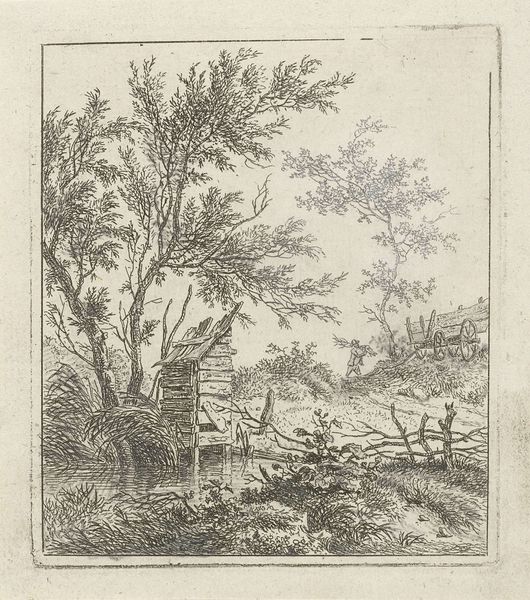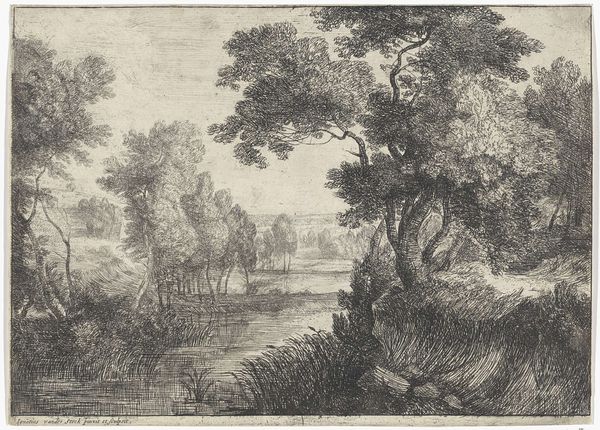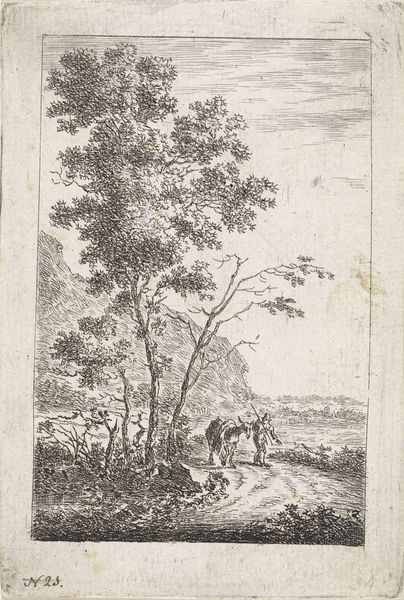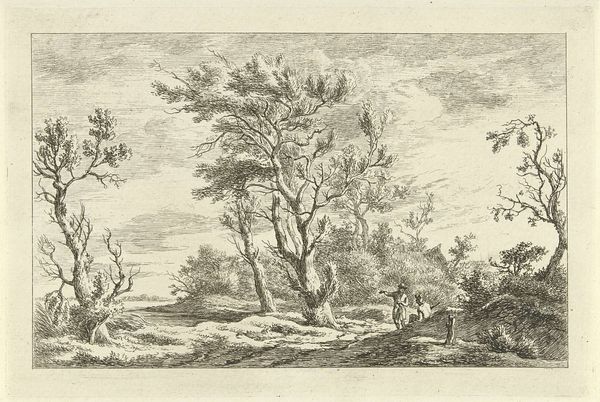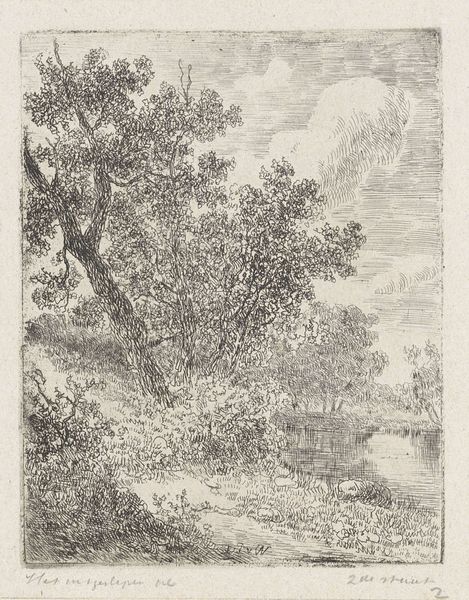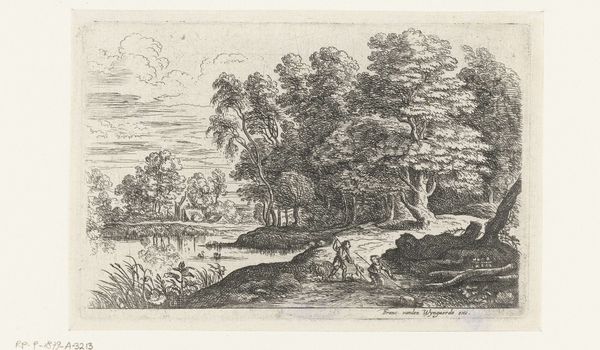![By This Brook [recto] by Douglas Warner Gorsline](/_next/image?url=https%3A%2F%2Fd2w8kbdekdi1gv.cloudfront.net%2FeyJidWNrZXQiOiAiYXJ0ZXJhLWltYWdlcy1idWNrZXQiLCAia2V5IjogImFydHdvcmtzLzQyMWIxNWI2LWU2ZGMtNDdlMi1iY2FkLTEzMjkwM2U4OWFlZi80MjFiMTViNi1lNmRjLTQ3ZTItYmNhZC0xMzI5MDNlODlhZWZfZnVsbC5qcGciLCAiZWRpdHMiOiB7InJlc2l6ZSI6IHsid2lkdGgiOiAxOTIwLCAiaGVpZ2h0IjogMTkyMCwgImZpdCI6ICJpbnNpZGUifX19&w=1080&q=75)
drawing, print, etching, pencil
#
pencil drawn
#
drawing
# print
#
etching
#
pencil sketch
#
landscape
#
pencil drawing
#
pencil
Dimensions: plate: 17.3 × 13.49 cm (6 13/16 × 5 5/16 in.) sheet: 22.38 × 20 cm (8 13/16 × 7 7/8 in.)
Copyright: National Gallery of Art: CC0 1.0
Editor: This is Douglas Warner Gorsline's "By This Brook," created in 1946. It’s an etching, with very detailed pencil work that almost feels like a photograph, yet somehow also timeless. What stands out to you in this print? Curator: Well, what strikes me immediately is the seeming paradox Gorsline presents. It appears to be a serene landscape, two figures fishing by a stream. But think about the socio-political context of 1946. World War II had just ended. What role might depictions of idyllic, untouched nature play in the collective psyche after such global trauma? Is it escapism? Is it a desire to return to simpler times, or a deliberate visual counterpoint to industrial warfare? Editor: That's a very interesting point. So, the choice of subject matter is not simply aesthetic, but carries a heavier weight? Curator: Exactly. And look at the technique itself. Etching is an inherently reproducible medium. What does it mean to create what appears to be a unique, intimate landscape using a technique associated with mass communication and distribution? Is Gorsline commenting on the democratization of art, or perhaps the potential for even intimate moments to be captured and disseminated? Consider the public accessibility this etching provides versus an original painting, for instance. Who gets to experience art, and in what format? Editor: It makes me think about the accessibility of art and how different mediums play into that accessibility, then and now. It is not something I usually consider, the politics behind an artwork that seems so quiet. Curator: Precisely! Thinking about these historical and social layers transforms how we perceive the piece, doesn't it? Editor: Definitely. It encourages a more critical and engaged viewership. Thanks! Curator: My pleasure. Thinking about art as an active participant in society, not just a passive reflection, really enriches our understanding and experience.
Comments
No comments
Be the first to comment and join the conversation on the ultimate creative platform.
